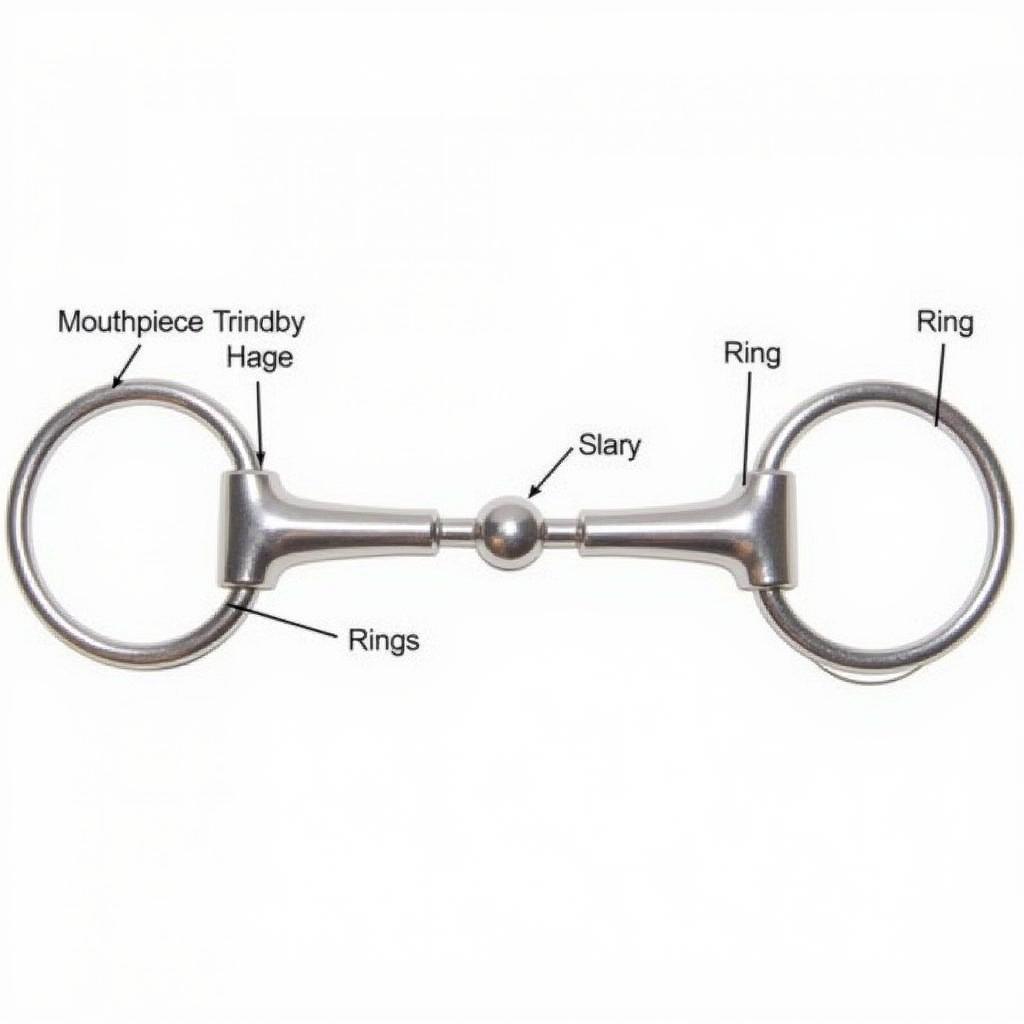The Weymouth Horse Bit, a key component of double bridles, is often misunderstood. This article delves into the intricacies of the Weymouth bit, exploring its various types, proper usage, and the benefits it offers for advanced riders and their horses. We’ll discuss how to choose the correct Weymouth bit and integrate it into your riding routine for optimal performance and communication.
 Anatomy of a Weymouth Bit
Anatomy of a Weymouth Bit
The Weymouth bit, a crucial part of the double bridle, is designed for experienced riders seeking refined control and communication with their horses. Unlike a snaffle bit, which operates primarily on direct pressure, the Weymouth bit utilizes leverage and pressure points on the poll, chin groove, and bars of the mouth. Understanding these pressure points is essential for proper bitting and effective communication.
Choosing the Right Weymouth Bit
Selecting the appropriate Weymouth bit depends on several factors, including your horse’s conformation, temperament, and training level. The mouthpiece is a critical consideration, as it directly impacts the horse’s comfort and responsiveness.
- Mouthpiece thickness: Thicker mouthpieces generally exert less pressure, making them suitable for sensitive horses. Thinner mouthpieces offer more precise control but require a skilled hand.
- Ring type: Loose ring Weymouth bits allow for more lateral movement, while fixed rings provide greater stability. Eggbutt and D-ring variations offer a balance between the two.
- Cheek piece length: The length of the cheek pieces influences the leverage action of the bit. Longer cheek pieces create more leverage, requiring less rein pressure from the rider.
If you’re unsure which Weymouth bit is best for your horse, consulting with a qualified riding instructor or headstalls for horses expert is recommended. They can assess your horse’s individual needs and recommend a suitable bit.
Using the Weymouth Bit Correctly
The Weymouth bit should always be used in conjunction with a bradoon and a correctly fitted horse headstalls for sale. The reins attached to the bradoon provide primary control and steering, while the Weymouth reins refine the horse’s head carriage and responsiveness to aids.
- Rein contact: Maintain consistent and soft contact with both sets of reins, avoiding harsh or jerky movements.
- Pressure and release: Apply pressure with the Weymouth reins only when necessary for refinement, immediately releasing the pressure when the horse responds correctly.
- Coordination with the bradoon: The bradoon and Weymouth reins should work in harmony, with the rider using subtle adjustments to communicate effectively.
Benefits of Using a Weymouth Bit
When used correctly, the Weymouth bit can enhance communication and refinement in advanced dressage movements. It allows for:
- Increased precision: The leverage action of the bit allows for subtle adjustments to the horse’s head carriage and poll flexion.
- Improved collection: The Weymouth bit can encourage self-carriage and collection, leading to more balanced and expressive movement.
- Enhanced responsiveness: The refined pressure points of the bit can improve the horse’s responsiveness to aids, allowing for greater precision in movements.
“A properly fitted Weymouth bit can transform a horse’s performance,” says renowned equestrian trainer, Amelia Thompson. “It’s a powerful tool for refined communication, allowing riders to achieve greater harmony and precision in their riding.”
Common Misconceptions about the Weymouth Bit
One common misconception is that the Weymouth bit is inherently harsh. In reality, its severity depends entirely on the rider’s hands. “The Weymouth bit is not a punishment tool,” explains equine behaviorist, Dr. David Miller. “It’s a tool for communication, requiring a skilled and empathetic rider.” Another misconception is that any rider can use a Weymouth bit. It’s essential to remember that this bit is designed for experienced riders who have a deep understanding of equine anatomy and biomechanics. Using horse racing bits requires skill and precision.
In conclusion, the Weymouth bit is a valuable tool for experienced riders seeking refined control and communication with their horses. Choosing the right bit, understanding its mechanics, and using it correctly are crucial for achieving optimal performance and ensuring the horse’s comfort. Remember that seeking professional guidance is always recommended. If you are interested in antique equipment, check out our selection of antique horse bit. You can also learn more about different kinds of bits with our guide on english horse bits types.
FAQ
- When should I start using a Weymouth bit?
- What are the signs of a poorly fitted Weymouth bit?
- How do I clean and maintain my Weymouth bit?
- Can I use a Weymouth bit on any horse?
- What are the alternatives to a Weymouth bit?
- How often should I check the fit of my Weymouth bit?
- What are the common mistakes to avoid when using a Weymouth bit?
When you need assistance, contact us at Phone: 0772127271, Email: [email protected], or visit us at QGM2+WX2, Vị Trung, Vị Thuỷ, Hậu Giang, Việt Nam. We have a 24/7 customer service team.